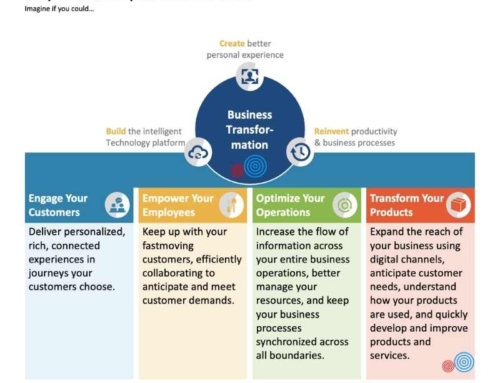Four ways to grow your business without overwhelm and confusion.
Importance of Clarity
Overwhelm and confusion are inevitable consequences of lack of clarity. The lack of clarity in business is when leaders embark on activities with neither an end goal nor a clear path to achieving the desired outcome.
We aim to bring together resources that will provide small business owners clarity in growing their business towards their desired goals and help them make the right decisions at the right time.
Why is clarity important now?
Recently various disruptions have caused havoc to almost all businesses. Some companies have taken advantage of the interruption, and others have experienced shrinkage or close-downs.
Decision making within unforeseen situations is not easy. Yet, people who have suitable mental models seemed to adapt better quickly and take advantage of the situation.
Clarity of the desired outcome is the key to achieving business growth.
To help develop the suitable mental models in this article, we will introduce you to four types of growth models we consider as part of our advisory services.
We have come up with this simple way to view growth based on our experience in helping other businesses succeed and the learnings we have gained developing our own business.
The purpose of categorising the growth helps you to identify the right resources and give the ability to manage projects more systematically to avoid confusion and overwhelm. Categorisation of growth models also provides the ability to estimate and postulate expected end goals and set realistic expectations based on cross-industry experiences.
Four types of business growth
The four types of business growth we introduce in this article are our way to view the world based on our personal experience and not necessarily a textbook version taught in business schools.
We hope you will relate to the four types of growth models we introduce.
The four types of growth are:
- Basic Growth
- Efficient growth
- Effective growth
- Exponential growth
The basic growth and effective growth draw knowledge and interpret the available data using accounting and finance knowledge.
The efficient and exponential growth of a company primarily relies on creative thinking and the “engineering” view.
Let us broadly outline each type of growth, and in the subsequent articles, we will explain how to achieve the required growth systematically.
Basic Growth
Basic growth models focus simply on more sales. Selling is the foundation of any business, and more sales mean more revenue. Assuming the company can source the goods and services they produce at a lower cost than they sell, the company can profit, and more sales will deliver more profit.
PROFIT = REVENUE – COST
For more information on how to be successful with basic growth type, refer to this link. To understand the limitations of basic growth type, refer to this link. (note We will update these links as soon as the new articles are published.)
Efficient growth
The focus of efficient growth is on the “COST” in the above equation.
Efficient growth is about reducing the company’s fixed and variable costs by lowering all non-value adding activities that contribute to the unnecessary expense of delivering goods and services and tightening the processes to ensure recovery of revenue due to the business faster.
In effect, you consider that all resources deployed within the businesses deliver maximum outputs to support the sales with minimum cost.
The measure of efficiency equation is as follows:
Efficiency = (Cost of goods or services Sold / Total Deployed Funds) X 100 %
The focus on efficiency related-growth is in productivity improvement and therefore directly impacts on profit margin.
For more details of the application of efficient growth techniques, tools and limitations, follow these links. (note links to be updated as soon as the new articles are published.)
Effective Growth
Effectiveness is concerned with doing the right things with the available funds.
Effective growth models seek to optimise available funds deployed in the right resources and processes to deliver the required returns.
Effectiveness = (Total Deployed funds / Total available Funds) X 100 %
Typically the type of questions to consider includes alternative ways to deliver the same product and services. Examples of this include partnership models, affiliate marketing, buying out competitors, selling other people’s products and services.
For more details of the application of practical growth tools and limitations, follow these links. (note We will update these links as soon as the new articles are published.)
Exponential growth
Exponential growth occurs when the growth rate becomes ever more rapid than the increments in investments or efforts.
Exponential growth is a new paradigm of development. Businesses take on a transformative approach with exponential growth.
They focus on core customer value delivery without using traditional business models that consider the process sequence consisting of source –> make –> deliver. Instead, the exponential growth models lean on infrastructures or “platforms.” The business model seeks to provide “platforms” for facilitating suppliers and customers interactions.
Developing new infrastructures have become more accessible to many businesses in this current era due to the digital revolution. Hence we see many examples of exponential growth of companies in recent times.
Examples of exponential growth include Netflix, Airbnb, Skype, Spotify, Amazon and many more.
We will delve into more details of exponential growth in upcoming articles.
For more details of the application of practical growth tools and limitations, follow these links. (note We will update these links as soon as the new articles are published.)
Conclusion
The purpose of the article is to introduce the types of growth available to every business. The nature of business growth pursued by each company may differ depending on the unique situation and environment within which they operate.
Recommendation:
We recommend, all companies must consider all four growth options when developing their growth strategy using a systematic approach that will help monitor the progress and deliver measurable results.
We are developing an ultimate 10 step blueprint that will help companies systematically work through their growth plans and prepare a strategic approach that will match their business needs.
For more information, we encourage you to connect with us via our get help page.






